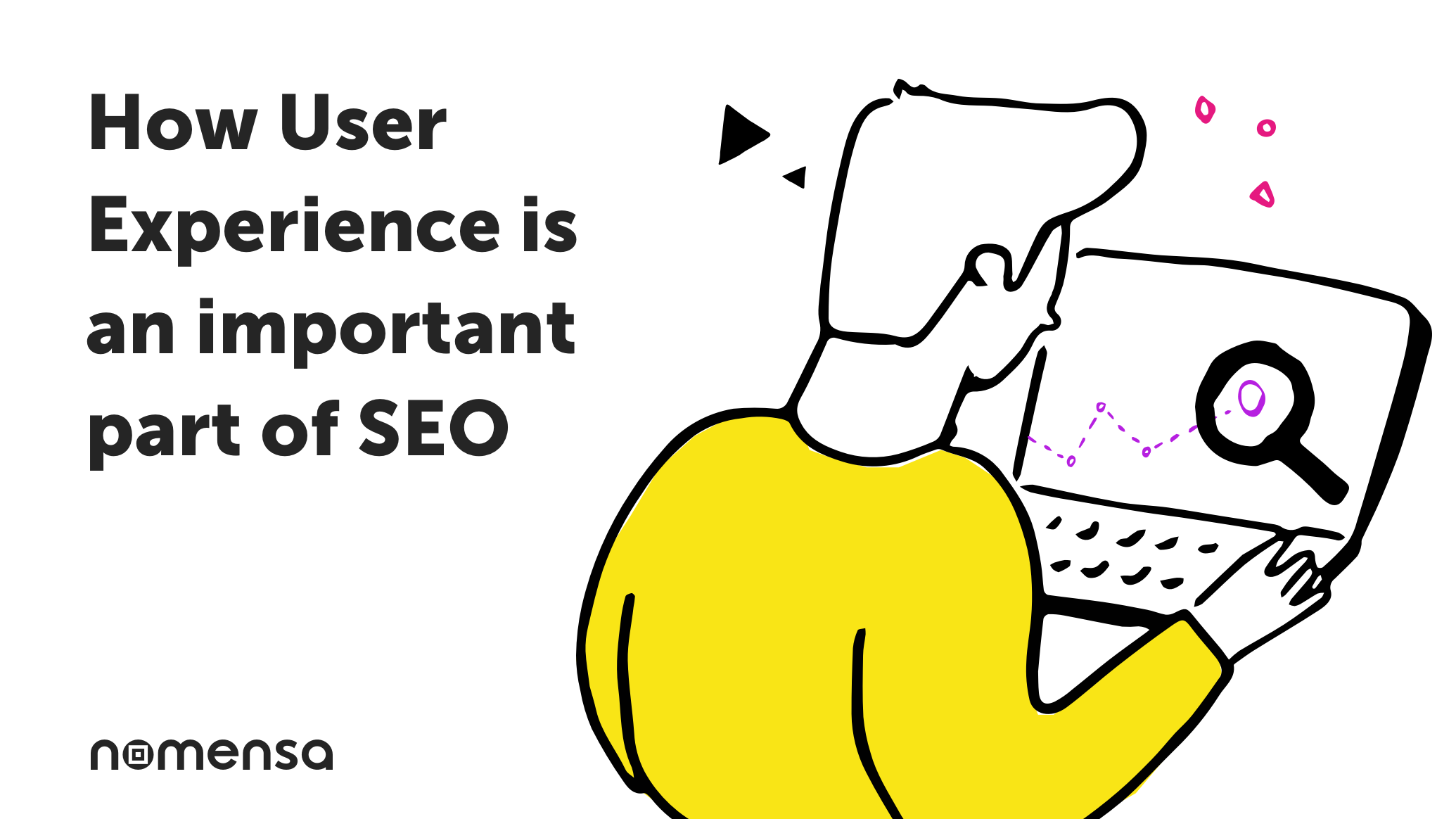
UX Research and Design are all about providing your users with the best experience on your website that keeps them coming back.
Google wants to give its users the best results that provide the best experience and answer their questions.
SEO is the glue that holds this all together. By promoting the needs of Google throughout the design and build process, we can ensure that a website will not only meet the needs of a user but also rank well and drive qualified traffic. After all, how will your users find your website if not through Google?
How Google has developed its search engine
Google’s ranking algorithm has developed to become a sophisticated system that measures a website against hundreds of metrics. The reality is that this algorithm is so complicated it is becoming impossible to ‘hack’. When creating the algorithm, Google strived to put its users at the centre of everything it does. This user-centred design thinking is where the cross-over between user experience and search engine optimisation began. By understanding user experience in SEO, we can develop better strategies for our websites. These websites will then go on to rank and drive traffic.
Google has always considered the user experience at every stage of the development of its search engine. Let’s start by looking at some of the evolutions it has made to its algorithm over the years.

- The Google Hummingbird update in 2013 helped the search engine understand the intent and context behind searches. This allowed users to ask more complex questions and receive relevant results, creating a more sophisticated search results page that is considered more than just an exact keyword match.
- The Mobile-First Indexing Update in 2018 prioritised websites based on their mobile website first, before the desktop site. By then, most users browsed the web through mobile phones. Google ensured that it met the needs of its users by providing content that was accessible and provided a good experience on mobile.
- The Page Experience Update in 2020 considered several signals that quantified the website experience. These were mobile usability, core web vitals, security and HTTPS usage. By calculating the time a page took to load, for example, Google was able to prioritise faster websites and create a better browsing experience for its users.
- The Helpful Content Update in 2022 promotes websites with user-friendly content. This update ensures that all content in SERPs answers a question and helps the user. This ensured a good user experience by penalising websites that created content for search engines and not humans.
We can see from the small sample of these updates how Google has strived to put its users at the centre of everything it does. So, it’s only natural that user-centred website design and development should be at the top of its priority list when ranking websites.
When creating a website that prioritises the user experience, there are many things we need to consider. Let’s discuss a few scenarios where UX does affect SEO.

- Personas: We create personas to understand the context, motivations and needs of users on a website. At Nomensa, we design personas to represent important user archetypes. We consider Google as a user and as such, create a persona for the search engine. Search engines regularly visit websites to understand and index new pages or updated content. By creating a persona to represent Google, we ensure that the needs of this high-value user are incorporated, and SEO is brought to the heart of the design.
- Information Architecture: Well-researched information architecture helps users and Google find pages on your website. Much like our own skeleton the structure of a website is not seen, it is felt, it exists beneath the surface. Meeting users’ expectations and needs for how your content is divided and connected provides a good experience for your users. Google rewards a well-structured site by indexing all the content available to search engines. With more indexed pages across your website, you increase the keyword opportunities, which results in increased visibility in search.
- Usability Testing: How easy is your website to use, and what is preventing your users from completing actions on your website? Websites with poor usability will frustrate users. They will then return to the SERPs, signalling to Google that your content is not helpful or did not meet their expectations. By completing usability testing and ensuring your website meets the needs of your users, you will deliver a good experience which will result in positive signals to Google that your website is helpful.
- Accessibility Review: Is your website accessible to everyone? The world wide web was created to give everyone equal access to information. But is your website set up for screen readers, including alt tags, or are your colours a good contrast for visually impaired people? Google is like a blind and deaf user. Currently, it cannot see images or even hear sound. An accessibility review checks how well your website is set up for these users. Creating an accessible website also meets the criteria that Google needs to be able to understand the different elements and structure of your website.
- Content Design: How engaging is your content? Creating content that engages and answers a question is key to SEO. Structuring the content on your page to guide the user to the answer or action they need to complete creates a good experience. But not only does good content design provide positive signals to search engines, but it also helps search engines understand your content. If crawl bots cannot find or understand your content, they will not index your page.
UX and SEO – a winning partnership
Over 80% of all online searches are completed through Google, and around 4.3 billion people worldwide use the search engine. These success statistics show that Google is consistently staying out in front of all its competitors, through user-centred design and thinking. Which is probably the biggest advert for combining UX and SEO together to create a winning combination. If it works for Google, it should work for us.
Here at Nomensa, we have specialist teams in both user research and search engine optimisation, so we are uniquely placed to answer all your queries and help drive the right people to your website.
We drive commercial value for our clients by creating experiences that engage and delight the people they touch.
Email us:
hello@nomensa.com
Call us:
+44 (0) 117 929 7333




